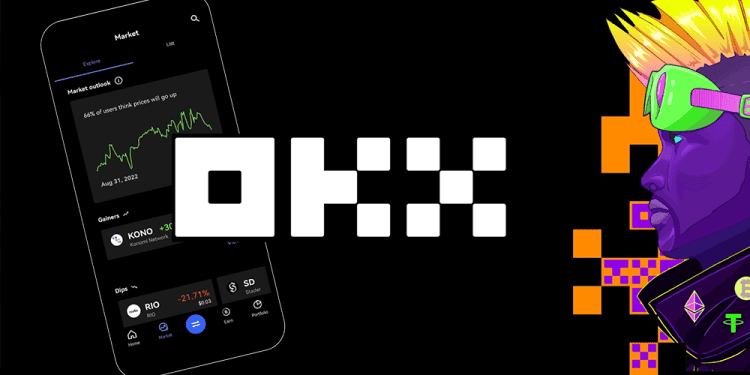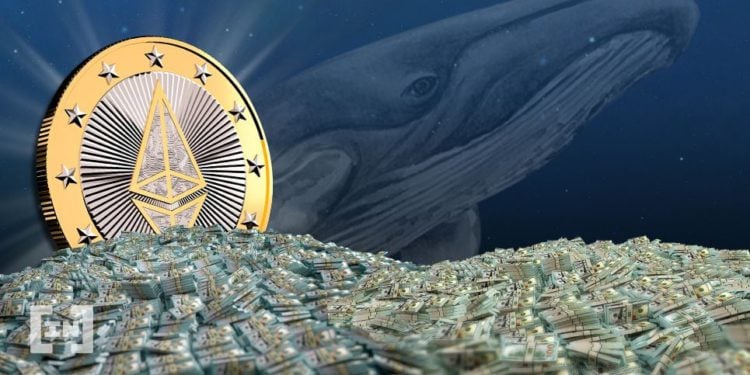 web3.0
web3.0 Ethereum will undergo a Cancun upgrade on the Sepolia and Holesky testnets in early February, and the mainnet will be launched by the end of February at the latest
Ethereum will undergo a Cancun upgrade on the Sepolia and Holesky testnets in early February, and the mainnet will be launched by the end of February at the latest
Ethereum’s next major upgrade, Dencun, has been launched on the largest test network Goerli on January 17, according to the latest announcement from the Ethereum Foundation narrate. It is reported that in the next two weeks, the Sepolia and Holesky test networks will undergo Dencun upgrade as planned.
After Goerli completed the Dencun hard fork upgrade on January 17th
Sepolia: Dencun will be activated at Epoch 132608, which is expected to be on January 30 UTC time 22:51 (6:51 am Beijing time on January 31st)
Holesky: The upgrade will be launched at Epoch 29696, and the time point is expected to be UTC time 11 on February 7 :35 (7:35 pm Beijing time on 2/7)
According to the Ethereum Foundation, if the subsequent upgrades of Sepolia and Holesky go smoothly, the next step is to launch the Ethereum mainnet Start the Dencun upgrade. Previously, the foundation revealed that the upgrade would be implemented as early as the end of February.
The word "Dencun" is a combination of the Mexican cities Cancun and Deneb, and is used to describe the upgrade that occurs at the Ethereum execution layer. This upgrade includes rule changes for all protocols, and the consensus layer for block verification will have its own fork, which is called "Deneb." Therefore, "Dencun" refers to the combined name of these two upgrades.
Goerli Cancun Upgrade Problem
However, it should be noted that when Ethereum developers performed the Dencun upgrade on the Goerli test network on January 17, they encountered an insufficient number of participating validators. and bifurcation issues. Fork means that different nodes have different versions of the transaction history of the blockchain. To resolve this issue, the development team has conducted further testing and investigation.
Ethereum core developer Tim Beiko said that if more Goerli validators do not upgrade in the future, "non-final testing" will be possible, which will help understand the network's performance when validator participation is low. How would the situation work.
EIP-4844’s blob will significantly reduce L2 fees
This Dencun upgrade of Ethereum includes multiple updates. The core proposal that receives the most attention is EIP-4844: Proto-Danksharding, which passed Introducing a new transaction type (blob carrying transaction) to greatly improve the scalability of Ethereum and is expected to reduce Layer 2 transaction costs by 10-100 times; in addition, other upgrades will also help to further reduce handling fees and network congestion .
Tim Beiko said this month that after the Goerli test network completed the Dencun upgrade, some blobs have been transmitted on the network, but most of the blobs currently transmitted are empty.
Blobs are a new transaction format, introduced through EIP-4844 (protodanksharding), used to "temporarily" store transaction data (blobs can be deleted after 18 days), enhancing the data storage capacity of Ethereum. This has the potential to further reduce transaction fees on layer 2 networks.
The above is the detailed content of Ethereum will undergo a Cancun upgrade on the Sepolia and Holesky testnets in early February, and the mainnet will be launched by the end of February at the latest. For more information, please follow other related articles on the PHP Chinese website!
 HashKey Group推出国际平台HashKey Global!面向全球散户Apr 09, 2024 am 08:10 AM
HashKey Group推出国际平台HashKey Global!面向全球散户Apr 09, 2024 am 08:10 AM香港加密货币交易所HashKeyExchange已经获得监管牌照,能够向当地散户投资者提供交易服务。为了扩展其业务空间,其母公司HashKeyGroup正在寻求展开离岸业务。推出HashKeyGlobal平台据香港信报今(8)日报导,HashKeyGroup营运长翁晓奇表示,该公司已获得百慕大「数字资产投资者保护制度全面牌照」,正式推出HashKeyGlobal交易平台。翁晓奇表示,HashKeyExchange约有17万名客户,估计有兴趣、但因不合乎规定的潜在客户量,为现有客户的4倍,此潜力无
 美国律师:以太坊现货ETF若2024年5月未获批!最晚将在2025年年中Feb 26, 2024 am 08:13 AM
美国律师:以太坊现货ETF若2024年5月未获批!最晚将在2025年年中Feb 26, 2024 am 08:13 AM本站(120BtC.coM):贝莱德、Hashdex、ARk21Shares、VanEck、Fidelity等金融机构在去年相继向SEC提交总共8档以太坊现货ETF申请,但过去数周以来,SEC已相继推迟Fidelity、贝莱德、灰度、Invesco/Galaxy等以太坊现货ETF的申请决定期限。8档以太坊现货ETF相关申请时间表彭博分析师JamesSeyffart先前指出,这完全如他预期,未来几个月,还会有更多的推迟,目前对以太坊现货ETF来说,唯一重要的日期是5月23日,因为这是VanEck申
 OKX向参与以太坊质押的用户发放STRK空投Feb 24, 2024 pm 03:30 PM
OKX向参与以太坊质押的用户发放STRK空投Feb 24, 2024 pm 03:30 PM本站(120btC.coM):以太坊Layer2扩容解决方案Starknet代币STRK空投正如火如荼进行中,是迄今范围最广的个人代币分配,就连以太坊质押者也有资格获得空投。对此,加密货币交易所OKX昨(22)日表示,已成功向那些在以太坊合并前通过OKX参与以太币质押的用户发放STRK空投。根据官方公告,STRK空投代币均直接存入OKX用户的账户,无需额外申领,符合资格的用户现在即可登入账户进行检视。OKX公布的STRK空投规则如下:快照要求:在快照时间(UTC时间2022年9月15日早上6点4
 以太坊NFT交易量逼近年度新高!Pudgy Penguins市值第3紧追无聊猿Feb 13, 2024 am 09:10 AM
以太坊NFT交易量逼近年度新高!Pudgy Penguins市值第3紧追无聊猿Feb 13, 2024 am 09:10 AM以太坊NFT交易量的增加与市值排名第三的NFT项目PudgyPenguins的持续发展密切相关。在过去的NFT熊市中,PudgyPenguins成功地保持了其市值排名,并吸引了大量投资者的关注。与此同时,新兴头像项目Pandora也迅速崛起,在市值排名中迅速攀升至第五名。这表明,市场对于NFT项目的需求不断增长,并且投资者对于头像类NFT项目的关注度也在提高。这一趋势预示着NFT市场的潜力和机会,为投资者和项目开发者提供了新的发展以太坊NFT交易量回温TheBlock数据显示,虽然比特币NFT交
 mfers创始人发行Base链Meme币mfer!单日暴涨2万倍 市值达2.3亿美元Mar 31, 2024 am 10:21 AM
mfers创始人发行Base链Meme币mfer!单日暴涨2万倍 市值达2.3亿美元Mar 31, 2024 am 10:21 AM以太坊L2Base的模因热潮仍在延烧,知名模因NFT项目Mfers创始人Sartoshi今日发布模因币$mfer,总供应量10亿颗,并分配20%的代币空投给持有mfer生态NFT的社群、艺术家等,其余全部投入流动池。市值不到一天内迅速冲破2.3亿美元,交易量突破6,530万美元,迅速成为今日市场焦点。$mfer单日飙涨超2万倍DexScreener数据显示,$mfer从上线时的0.00001419美元,一路飙涨,在今晨约10点来到最高0.2870美元,涨幅惊人地超过2万倍。截稿前暂报0.2396
 Gary Gensler:SEC批准比特币现货ETF 不意味以太坊也会通过Feb 16, 2024 am 08:00 AM
Gary Gensler:SEC批准比特币现货ETF 不意味以太坊也会通过Feb 16, 2024 am 08:00 AM美国证券交易委员会(SEC)主席GaryGensler在昨日接受CNBC采访时再次强调,批准比特币现货ETF的决定并不意味着SEC对数字资产的认可。他指出,该决定仅适用于比特币,并不意味着未来SEC将采用与比特币相同的方式来处理以太坊等其他数字资产。这一决定是基于对比特币市场的具体情况和监管措施的评估,而不是对整个数字资产市场的全面认可。Gensler还表示,SEC将继续对数字资产市场进行监管,并根据各种数字资产的特点和风险因素来制定相应的监管政策。根据Gensler在节目中的观点,他指出目前已
 幻兽帕鲁在Steam上大热!以太坊和Solana的Meme币PALW与PAL登场Jan 27, 2024 pm 03:36 PM
幻兽帕鲁在Steam上大热!以太坊和Solana的Meme币PALW与PAL登场Jan 27, 2024 pm 03:36 PMPocketpair发布的Steam游戏《幻兽帕鲁》在1月19日开启抢先体验后迅速走红,并在首发24小时内突破了200万套的销量。游戏的同时在线人数也超过了129万,成为该平台上最畅销和最受欢迎的游戏。《幻兽帕鲁》Meme币现身以太坊、Solana在加密货币世界中,Meme币是非常独特的一类,许多Meme币都因知名IP的影响而诞生,并创造了百倍、千倍的财富神话。例如与特斯拉创办人马斯克(ElonMusk)有关的Doge、Shib、Troll等。同样,在《幻兽帕鲁》卖翻全球的背景下,其相关Meme
 以太坊ICO投资人疑套现!转出1732枚ETH至交易所KrakenFeb 21, 2024 pm 07:16 PM
以太坊ICO投资人疑套现!转出1732枚ETH至交易所KrakenFeb 21, 2024 pm 07:16 PM以太坊Dencun升级主网上线已确定在3月13日启动,该升级将引入EIP-4844,可大幅提升以太坊的可扩展性,并有望让Layer2交易成本降低10-100倍,而随着Dencun升级将至,以太坊在昨晚冲破3000美元,创下2022年4月来新高。早期投资者疑套现根据Lookonchain的监测数据显示,当以太坊价格突破3,000美元时,一个持有了8.6年的早期投资者在昨晚将1732枚ETH转移到了加密货币交易所Kraken。这一笔交易价值约为515万美元,引起了市场的一定关注,有人猜测这可能是为了

Hot AI Tools

Undresser.AI Undress
AI-powered app for creating realistic nude photos

AI Clothes Remover
Online AI tool for removing clothes from photos.

Undress AI Tool
Undress images for free

Clothoff.io
AI clothes remover

AI Hentai Generator
Generate AI Hentai for free.

Hot Article

Hot Tools

Dreamweaver Mac version
Visual web development tools

VSCode Windows 64-bit Download
A free and powerful IDE editor launched by Microsoft

MinGW - Minimalist GNU for Windows
This project is in the process of being migrated to osdn.net/projects/mingw, you can continue to follow us there. MinGW: A native Windows port of the GNU Compiler Collection (GCC), freely distributable import libraries and header files for building native Windows applications; includes extensions to the MSVC runtime to support C99 functionality. All MinGW software can run on 64-bit Windows platforms.

PhpStorm Mac version
The latest (2018.2.1) professional PHP integrated development tool

SAP NetWeaver Server Adapter for Eclipse
Integrate Eclipse with SAP NetWeaver application server.





